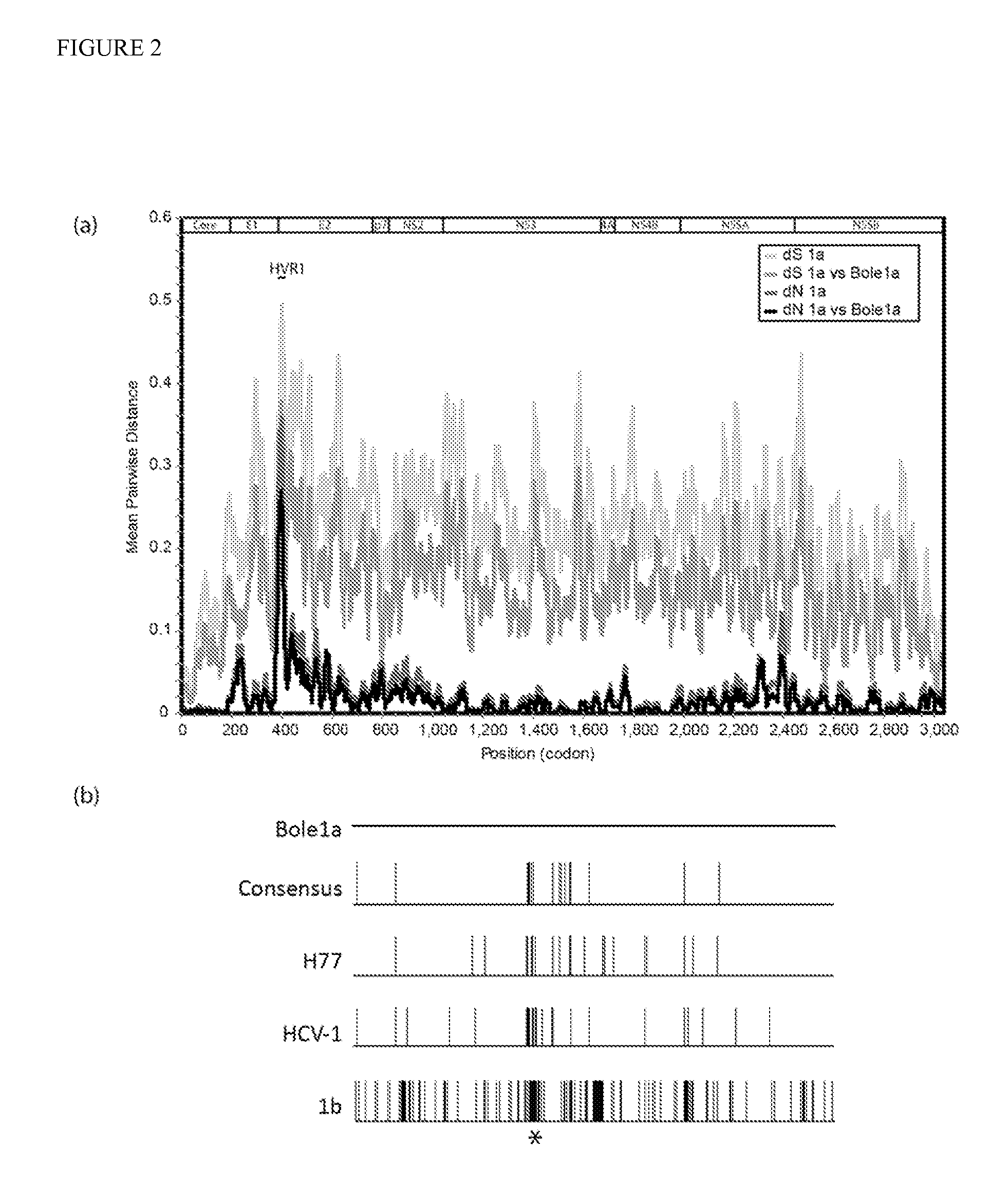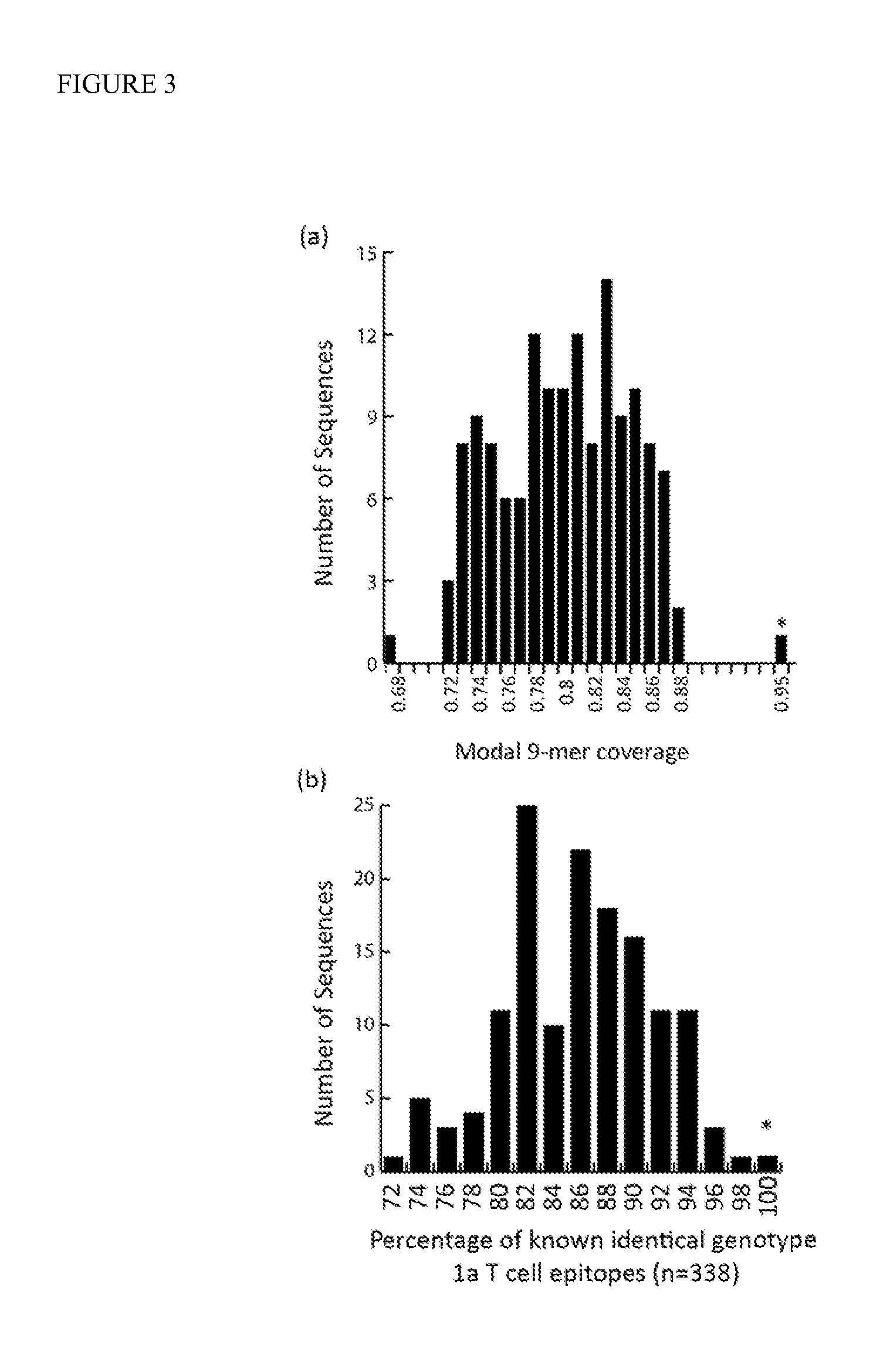Synthetic hepatitis C genome and methods of making and use
a technology of hepatitis c and c genome, applied in the field of synthetic hepatitis c genome and methods of making and using, can solve the problems of reducing vaccine effectiveness, arbitrary selection of viral strains to be used as antigens, and reducing vaccine effectiveness, so as to reduce the viral load of hcv.
- Summary
- Abstract
- Description
- Claims
- Application Information
AI Technical Summary
Benefits of technology
Problems solved by technology
Method used
Image
Examples
example 1
[0139]Trees for the E1 and NSSB regions generated ancestral sequences that agreed at 9763 (˜98%) of 9992 nucleotide sites in the alignment (gaps were counted as characters). Applying the codon threshold of MPP of 0.9837 or higher in either tree left 68 / 3012 (2.2%) unresolved codons. Of these 68, 42 were choices between synonymous codons and 26 were choices between non-synonymous codons. Covariance networks were used to resolve ambiguities.
example 2
[0140]Covarying positions. Of the 68 unresolved codons, 4 were determined based on dependence with resolved positions in the genome (H77 positions 1157, 1611, 2120, and 6554). All four of the positions (1157, 1611, 2120, and 6554) led to synonymous changes. Positions 1611 and 6554 were linked to multiple sites across the genome (50 and 3 respectively) whereas positions 1157 and 2120 were linked to one other resolved position. Because the covariance was only detected statistically, biological interaction is a question for further research.
example 3
[0141]Representative characteristics of Bole1a. Once a complete representative sequence for Bole1a was determined, it was desired that to ensure that Bole1a represents any set of nucleotide or protein HCV subtype 1a sequences and not just the sequences from which it was reconstructed. In order to confirm this, two additional datasets were used for confirmation. The first dataset was from a paper by Yusim et al. (J. Gen. Virol. 91:1194-1206 (2010)) and collected from the Los Alamos HCV database. This dataset contains 143 sequences, 136 of which are present in the original dataset; however, the authors of that report curated the dataset to avoid resampling linked sequences. This dataset is referred to as the Yusim dataset. The second dataset, which is referred to as the E1E2 dataset, contains 214 E1E2 sequences; these were obtained from our ongoing BBAASH cohort. The sequences in the latter dataset are unrelated to any full-length sequences in GenBank or from the LANL database. Neighb...
PUM
| Property | Measurement | Unit |
|---|---|---|
| temperatures | aaaaa | aaaaa |
| pH | aaaaa | aaaaa |
| pH | aaaaa | aaaaa |
Abstract
Description
Claims
Application Information
 Login to View More
Login to View More - R&D
- Intellectual Property
- Life Sciences
- Materials
- Tech Scout
- Unparalleled Data Quality
- Higher Quality Content
- 60% Fewer Hallucinations
Browse by: Latest US Patents, China's latest patents, Technical Efficacy Thesaurus, Application Domain, Technology Topic, Popular Technical Reports.
© 2025 PatSnap. All rights reserved.Legal|Privacy policy|Modern Slavery Act Transparency Statement|Sitemap|About US| Contact US: help@patsnap.com



